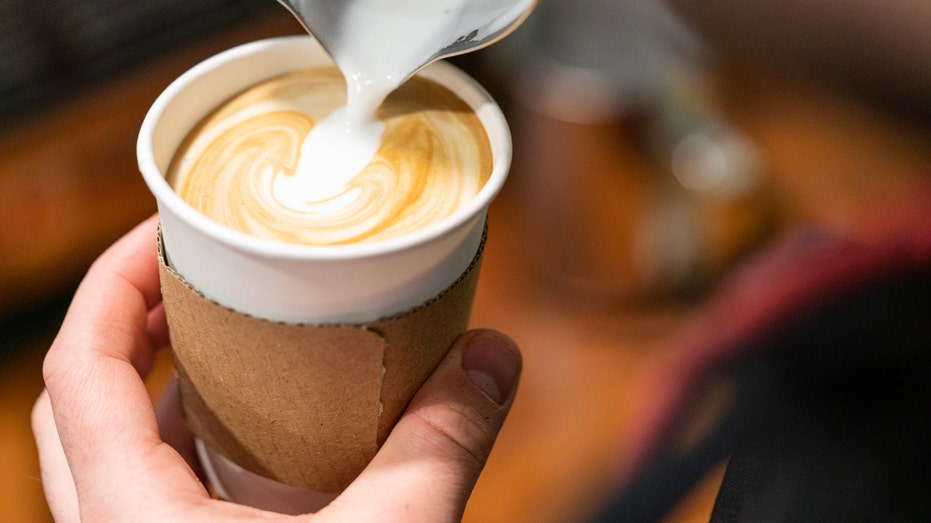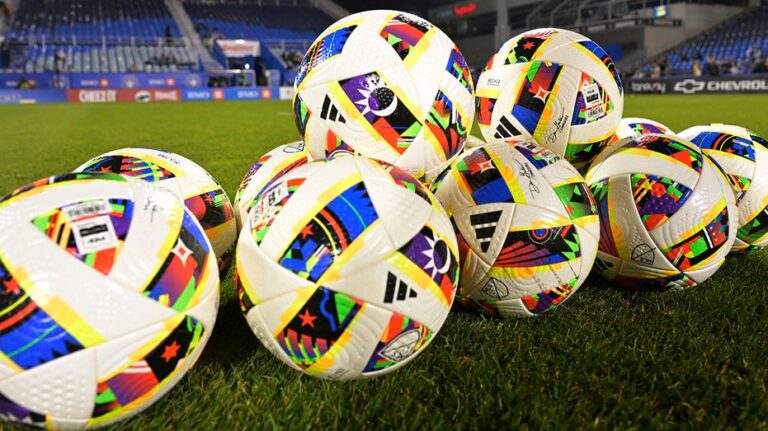
The terms “latte” and “cappuccino” may seem to be interchangeable.
Both beverages are espresso-based, have origins in Italy, are widely available at local coffee shops and national chains — and often come in either hot or iced varieties.
But despite their similarities, they are not the same thing, as a coffee expert told Fox News Digital in time for National Cappuccino Day on Friday.
COFFEE MILK, A RHODE ISLAND FAVORITE, HITS THE NATIONAL SCENE: ‘SWEET TASTE TO IT’
“The primary difference is the ratio,” Katie Thomas, senior manager of training and quality assurance at La Colombe Roasters, told Fox News Digital via email.
Thomas, based in Chicago, has worked at the coffee chain and brand for over 10 years, she said.
Traditionally, a cappuccino is a smaller beverage than a latte, Thomas said, and uses about two to four ounces less milk than a latte.
“This means the espresso is more prominent in the flavor profile,” she said.
Additionally, she said, “cappuccinos also tend to be more aerated than a latte, though this texture has become more open to interpretation over the years. Some baristas make dry cappuccinos that are very foamy, and some enjoy a cappuccino ratio with a thinner milk texture that’s perfect for making latte (cappuccino) art.”
CHICORY AN ALL-NATURAL ALTERNATIVE TO CHEMICALLY DECAFFEINATED COFFEE, SAYS HOMESTEADER
Both the latte and cappuccino were invented in Italy and their names reflect their origins, Thomas said.
In Italian, “latte” translates to “milk,” Thomas said — which makes sense given the high milk content of the beverage.
As the cappuccino has less milk than a latte, the beverage is darker, Thomas said.
The light brown color is supposedly the origin of its name, she said.
DARK MILK VS. MILK CHOCOLATE: AMERICANS LOVE ONE MORE THAN THE OTHER, BUT WHICH IS ‘BETTER’ FOR YOU?
“It is said to have been named after the color of the Capuchin friars’ robes,” she said.
The Order of Friars Minor Capuchin, a Catholic religious order of Franciscan friars, was founded in Italy.
Another big difference between a latte and a cappuccino is the time each drink is traditionally consumed, Thomas told Fox News Digital.
“If you ask an Italian, drinking a cappuccino after noon is incorrect,” she said.
For what it is worth, Thomas eschews this tradition and “loves them any time of day.”
Thomas said the grind of the beans is key when people attempt to make their own lattes and cappuccinos.
CLICK HERE TO SIGN UP FOR OUR LIFESTYLE NEWSLETTER
“Grind can be a difficult concept to understand as it pertains to flavor,” she said.
A person finding that his or her coffee is too bitter or burnt-tasting should “try coarsening the grind,” Thomas said.
“And in a pinch, you can add a pinch of salt to also curb some bitterness,” she said.
For more Lifestyle articles, visit www.foxnews.com/lifestyle
“Espresso machines require your coffee to be very finely ground, so make sure your grind adjustments are modest,” Thomas said — adding that “a little will go a long way.”
But Thomas advises any aspiring baristas to keep at it, even if there are setbacks.
“It takes time to find your favorite recipes,” she said.
“Investing in a good grinder gives you the perfect tool to experiment each morning to find your preferences.”
The terms “latte” and “cappuccino” may seem to be interchangeable.
Both beverages are espresso-based, have origins in Italy, are widely available at local coffee shops and national chains — and often come in either hot or iced varieties.
But despite their similarities, they are not the same thing, as a coffee expert told Fox News Digital in time for National Cappuccino Day on Friday.
COFFEE MILK, A RHODE ISLAND FAVORITE, HITS THE NATIONAL SCENE: ‘SWEET TASTE TO IT’
“The primary difference is the ratio,” Katie Thomas, senior manager of training and quality assurance at La Colombe Roasters, told Fox News Digital via email.
Thomas, based in Chicago, has worked at the coffee chain and brand for over 10 years, she said.
Traditionally, a cappuccino is a smaller beverage than a latte, Thomas said, and uses about two to four ounces less milk than a latte.
“This means the espresso is more prominent in the flavor profile,” she said.
Additionally, she said, “cappuccinos also tend to be more aerated than a latte, though this texture has become more open to interpretation over the years. Some baristas make dry cappuccinos that are very foamy, and some enjoy a cappuccino ratio with a thinner milk texture that’s perfect for making latte (cappuccino) art.”
CHICORY AN ALL-NATURAL ALTERNATIVE TO CHEMICALLY DECAFFEINATED COFFEE, SAYS HOMESTEADER
Both the latte and cappuccino were invented in Italy and their names reflect their origins, Thomas said.
In Italian, “latte” translates to “milk,” Thomas said — which makes sense given the high milk content of the beverage.
As the cappuccino has less milk than a latte, the beverage is darker, Thomas said.
The light brown color is supposedly the origin of its name, she said.
DARK MILK VS. MILK CHOCOLATE: AMERICANS LOVE ONE MORE THAN THE OTHER, BUT WHICH IS ‘BETTER’ FOR YOU?
“It is said to have been named after the color of the Capuchin friars’ robes,” she said.
The Order of Friars Minor Capuchin, a Catholic religious order of Franciscan friars, was founded in Italy.
Another big difference between a latte and a cappuccino is the time each drink is traditionally consumed, Thomas told Fox News Digital.
“If you ask an Italian, drinking a cappuccino after noon is incorrect,” she said.
For what it is worth, Thomas eschews this tradition and “loves them any time of day.”
Thomas said the grind of the beans is key when people attempt to make their own lattes and cappuccinos.
CLICK HERE TO SIGN UP FOR OUR LIFESTYLE NEWSLETTER
“Grind can be a difficult concept to understand as it pertains to flavor,” she said.
A person finding that his or her coffee is too bitter or burnt-tasting should “try coarsening the grind,” Thomas said.
“And in a pinch, you can add a pinch of salt to also curb some bitterness,” she said.
For more Lifestyle articles, visit www.foxnews.com/lifestyle
“Espresso machines require your coffee to be very finely ground, so make sure your grind adjustments are modest,” Thomas said — adding that “a little will go a long way.”
But Thomas advises any aspiring baristas to keep at it, even if there are setbacks.
“It takes time to find your favorite recipes,” she said.
“Investing in a good grinder gives you the perfect tool to experiment each morning to find your preferences.”



